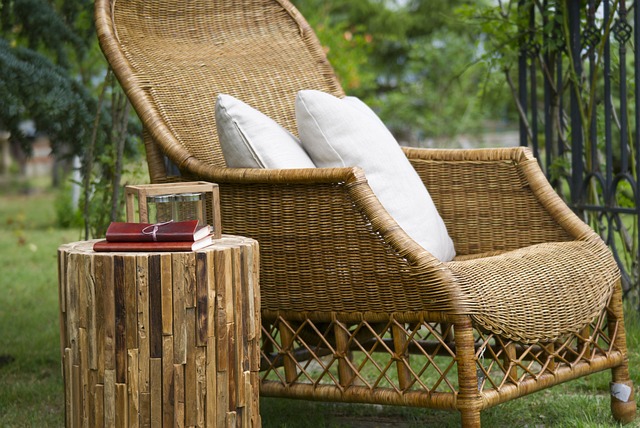Wicker furniture is a popular choice for both indoor and outdoor spaces. It has a timeless appeal and is known for its durability and comfort. However, one question that often comes up when considering wicker chairs for outdoor use is whether they can get wet.
Yes, wicker chairs can get wet, but their ability to withstand water depends on the materials and construction. Natural wicker materials are less water-resistant than synthetic materials, so proper care and maintenance, such as using a protective coating and drying them thoroughly if they get wet, are necessary to prevent water damage.
But there’s more to it. In this post, I will explore the topic of wicker chairs and their ability to withstand water exposure in detail. I will discuss the factors that affect the ability of wicker chairs to resist water damage, as well as tips for protecting them from water. I will also cover the maintenance and care of wicker furniture and compare it with other types of outdoor furniture. By the end of this post, you will have a better understanding of whether wicker chairs can get wet and how to care for them to ensure their longevity.
What is wicker?
Wicker is a style of furniture that is made by weaving natural or synthetic materials into a woven pattern. It is not a specific material but rather a technique of weaving. The materials used in wicker furniture can vary widely, but common choices include rattan, bamboo, willow, and synthetic materials like resin and plastic. The woven pattern is often used to create chairs, tables, and other furniture items. Wicker furniture has been used for centuries and has remained popular due to its durability, comfort, and aesthetic appeal. Today, wicker furniture is available in a variety of styles, from traditional to modern, and is often used in both indoor and outdoor settings.
Can wicker chairs get wet?
As I mention above whether wicker chairs can get wet largely depends on the material, construction, and coating of the chairs. Generally, natural wicker materials like rattan, bamboo, and willow are not naturally resistant to water and can be damaged if exposed to moisture for extended periods. However, synthetic wicker materials like resin and plastic are more water-resistant and can withstand exposure to water better than natural materials.
The construction of the chairs can also affect their ability to resist water damage. Wicker furniture that is tightly woven is less likely to absorb water and is more resistant to damage from moisture. Additionally, the coating applied to wicker furniture can also play a role in protecting it from water. Some wicker furniture comes with a protective coating that helps to repel water and prevent damage.
Overall, while wicker chairs can get wet, it is important to take proper precautions to protect them from water damage. This includes using a protective coating, storing chairs indoors or covering them during inclement weather, avoiding prolonged exposure to direct sunlight, and thoroughly drying them if they do get wet. With proper care and maintenance, wicker chairs can last for many years even when exposed to moisture.
Maintenance and care for wicker chairs
Proper maintenance and care for wicker chairs can help to extend their lifespan and keep them looking great. Here are 5 great tips for maintaining and caring for wicker chairs:
- Regular cleaning: Wicker chairs should be regularly cleaned to prevent dirt, dust, and debris from accumulating on the surface. Use a soft brush or cloth to gently brush away any dirt or debris, and then wipe the surface down with a damp cloth.
- Avoid sun damage: Wicker chairs can become brittle and dry if exposed to direct sunlight for extended periods. To prevent sun damage, keep wicker chairs in a shaded area or use furniture covers to protect them when not in use.
- Use furniture covers during storage: When storing wicker chairs, use furniture covers to protect them from dust, dirt, and moisture. This will help to prevent damage and keep them looking their best.
- Keep them dry: Wicker chairs should be kept dry to prevent water damage. If they get wet, use a dry cloth or towel to soak up any moisture and allow them to air dry completely before using them again.
- Avoid harsh chemicals: Avoid using harsh chemicals or abrasive cleaners on wicker furniture, as they can cause damage to the surface. Instead, use a mild soap and water solution to clean the chairs.
With proper care, wicker furniture can be a long-lasting and beautiful addition to any indoor or outdoor space.
Other types of outdoor furniture
While wicker furniture is a popular choice for outdoor use, there are many other types of outdoor furniture available as well. Here are some other options to consider:
- Metal furniture: Metal furniture, such as aluminum or wrought iron, is durable and weather-resistant. It can withstand exposure to moisture and sunlight and is easy to clean.
- Wood furniture: Wood furniture, such as teak or cedar, is a classic choice for outdoor use. It is durable, attractive, and can be treated to resist water and sun damage.
- Plastic furniture: Plastic furniture, such as polyethylene or PVC, is lightweight and easy to clean. It is often less expensive than other materials and is available in a wide range of colors and styles.
- Stone furniture: Stone furniture, such as granite or marble, is a durable and long-lasting option for outdoor use. It is heavy and may be more difficult to move, but it can withstand exposure to the elements and requires minimal maintenance.
When choosing outdoor furniture, consider the climate in your area, the amount of use the furniture will receive, and your personal style preferences. Each type of outdoor furniture has its own unique benefits and drawbacks, so it’s important to choose the one that best fits your needs and budget.
Your Next Read: Can Outdoor Cushions Get Wet?
Conclusion
In conclusion, wicker chairs can get wet, but their ability to withstand exposure to moisture largely depends on the materials, construction, and coating of the chairs. Proper care and maintenance, such as using a protective coating, storing the chairs indoors or covering them during inclement weather, avoiding prolonged exposure to direct sunlight, and thoroughly drying them if they do get wet, can help to protect wicker chairs from water damage and extend their lifespan.
In addition to wicker furniture, there are many other types of outdoor furniture available, each with its own unique benefits and drawbacks. When choosing outdoor furniture, consider the climate in your area, the amount of use the furniture will receive, and your personal style preferences to choose the best option for your needs.
Overall, with proper care and maintenance, wicker chairs and other types of outdoor furniture can be long-lasting and beautiful addition to any indoor or outdoor space.









